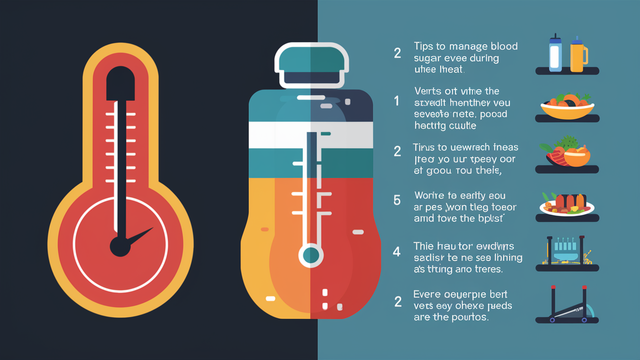As the nation issues a severe heatwave warning, he#re's how to manage your blood sugar# levels.

A warning for severe heatwaves has been issued by the India Meteorological Department (IMD) for various parts of the nation. In the event of a heatwave, Delhi NCR and many other regions of North India have been placed under a red alert, the strongest warning level possible. Here are some tips on how to take care of your health in light of the extreme heat wave that is expected to last for a few days across the nation.
Diabetes and other long-term medical conditions can be made worse by high temperatures. If you know someone who experiences unstable blood sugar, take note of the advice provided below. In order to prevent complications, managing diabetes during a severe heat wave requires careful planning and proactive measures. Severe heat waves can worsen the symptoms of diabetes mellitus and cause serious health problems like heat exhaustion, heat stroke, and dehydration. These are all-inclusive methods for efficiently managing diabetes during a heat wave.
• A heat wave may make blood sugar levels worse.
The body's ability to control blood sugar levels is impacted by diabetes, and high temperatures can make this control more difficult. Elevated temperatures have the potential to affect blood glucose levels, hasten the process of dehydration, and reduce the efficacy of some diabetes medications. Furthermore, diabetes increases a person's risk of developing heat-related illnesses.
The director of the Diabetes and Metabolic Research Center in Delhi, Dr. Ashok Jhingan, MD, stated: "Keeping up a healthy routine is crucial for managing diabetes, but summertime often brings disruptions." Alterations in daily routines may result in forgetting to check blood glucose levels on time or in adhering to a diabetes-friendly diet. People with diabetes are also more likely to become dehydrated during heatwaves, particularly if their blood glucose is out of control. It is imperative to take into account strategies such as continuous glucose monitoring (CGM) in order to properly regulate blood sugar levels. Smartphone-compatible CGM devices provide real-time monitoring even when you're on the go, protecting diabetes management from routine adjustments going awry.
Maintaining blood sugar levels within the recommended target range of 70 to 180 mg/dl for a significant portion of the day is crucial for individuals with diabetes, particularly in the summer. Utilizing continuous glucose monitoring (CGM) devices, which provide glucose level information without requiring finger pricking, is one way to accomplish this. Time in Range is one of the metrics these devices measure. Monitoring your readings more frequently is linked to spending more time in your ideal range, which can help you manage your blood sugar.
• Make sure you're properly hydrated.
Being hydrated is very important. Water aids in maintaining blood volume and controlling body temperature. Even if you don't feel thirsty, regularly sip water to avoid becoming dehydrated. Caffeinated beverages can increase fluid loss, and sugary drinks can spike blood sugar. Choose drinks with added electrolytes or water instead of sugar-filled ones.
• Check your blood sugar levels often.
Check your blood sugar levels more frequently than usual. Heat can lead to erratic fluctuations in blood sugar, which can be effectively managed by checking your blood sugar frequently. Insulin absorption in your body can be impacted by heat. To keep your blood sugar levels at their ideal levels during a heat wave, speak with your healthcare provider about how to modify your insulin dosages. The effectiveness of insulin and other drugs can be impacted by high temperatures. Keep your insulin out of the freezer and store it somewhere cool. If you must transport it, use an insulated bag or cool pack. Test strips and glucose meters should not be exposed to heat or direct sunlight. To guarantee that they give accurate readings, store them in a cool, dry location.
• Continue with your diet and exercise regimen as usual.
To keep your blood sugar stable, eat regular meals and maintain a balanced diet. Make sure to eat lots of fruits, vegetables, whole grains, and lean proteins. Steer clear of physically demanding activities between 10 a.m. and 4 p.m., when temperatures are at their highest. Choose to work out indoors in a cool atmosphere, or work out in the cooler hours of the morning or evening.
Because high temperatures can worsen foot problems, people with diabetes need to take extra care of their feet. Make sure your shoes are breathable and comfortable, and frequently examine your feet for blisters or sores.